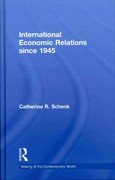Question
Chapter 21 In 2004, Ben Bernanke, governor of the Fed, spoke of a great moderation that had emerged from the separation of the real economy
Chapter 21
In 2004, Ben Bernanke, governor of the Fed, spoke of a "great moderation" that had emerged from the separation of the "real" economy from finance. The Fed was not averse to asset price inflation. Profits continued to increase because of increasing asset values, while labor's share of income fell. One essential foundation of the global boom was Fed-mandated low US interest rates, which loosened credit conditions. In this context, the Chinese and US economies became interdependent. The capitalism of asset price appreciation soon found the new asset class of homes to concentrate on.
The Fed lowered the short-term interest rate to encourage recovery after the 2001 recession. Alan Greenspan, then head of the Fed, lowered interest rates to restore confidence. Historically low interest rates induced a speculative upswing because of the easy availability of credit.
Tech companies realized profits by extracting data to sell to marketers and by monopolizing. In other words, the new economy made its profits from consumerism, which was not new. The labor share fell so much after the 2000s because workers could not so easily bargain for higher wages when there were so few firms with which to bargain. As a result, many were simply ejected from the production side of the new economy.
Debt compensated for income growth, and the leveraged boom in US housing prices during the 2000s served to paper over the abysmal decade in US labor markets. As long as house prices continued to increase, everything seemed fine. However, the era's financial innovation did not lead to an increase in economic efficiency, as the debt-based consumer economy could only keep going for so long.
Chapter 22
In the Age of Chaos, nothing is more fundamental to sustaining the global market than market participants' confidence in it. The 2000s macroeconomic expansion was led by a surge in housing prices, which had been made possible by Wall Street's provision of debt to many homeowners who lacked enough income from employment to pay their mortgage loans. Debt was seen as a solution to income growth. During the Great Recession, administrative state power brought transactional liquidity back to global capital markets and ended the panic. As a result, the Great Recession was a story of continuity.
When the prospect of illiquidity appeared, confidence evaporated and panic broke out in 2007 and 2008. To salvage the system, the Fed made credit widely available with low interest rates. However, as banks began to doubt the value of mortgage-related assets, funding costs shot up in all credit markets. The Fed bought almost $30 billion in toxic mortgage-related assets from the investment bank Bear Stearns, and on March 16, 2008, announced that it would act as the buyer of last resort for sellers of assets. The Fed kept buying assets and lending money, trying to push financial markets back to life.
The Democratic Party under Clinton had embraced finance-driven globalized capitalism. As a result, it was not prepared to think or act creatively when that capitalism self-destructed, and neither was the Obama administration. Even with the Fed's support at this time, banks were nervously hoarding cash instead of lending or investing. Unfortunately, in US history, large-scale public investment has only enjoyed political legitimacy in times of war. During peacetime, in the US the owners of capital have maintained the prerogative to decide where, when, and in what to invest.
The millions of foreclosed did not politically organize, and remained isolated. Given the lack of public investment plans and lack of political will or capacity to carry them out, the stimulus of 2009 could not push economic life in a better direction, which benefited Republicans. The Fed bought billions of dollars of long-term bonds, hoping to bring down long-term interest rates. The goal of lowering the return of low-risk investments was to induce greater immediate private investment and spending, which was known as quantitative easing.
Topic: How did debt as a solution to labor's falling share of income worsen the Great Recession?
Step by Step Solution
There are 3 Steps involved in it
Step: 1

Get Instant Access to Expert-Tailored Solutions
See step-by-step solutions with expert insights and AI powered tools for academic success
Step: 2

Step: 3

Ace Your Homework with AI
Get the answers you need in no time with our AI-driven, step-by-step assistance
Get Started


